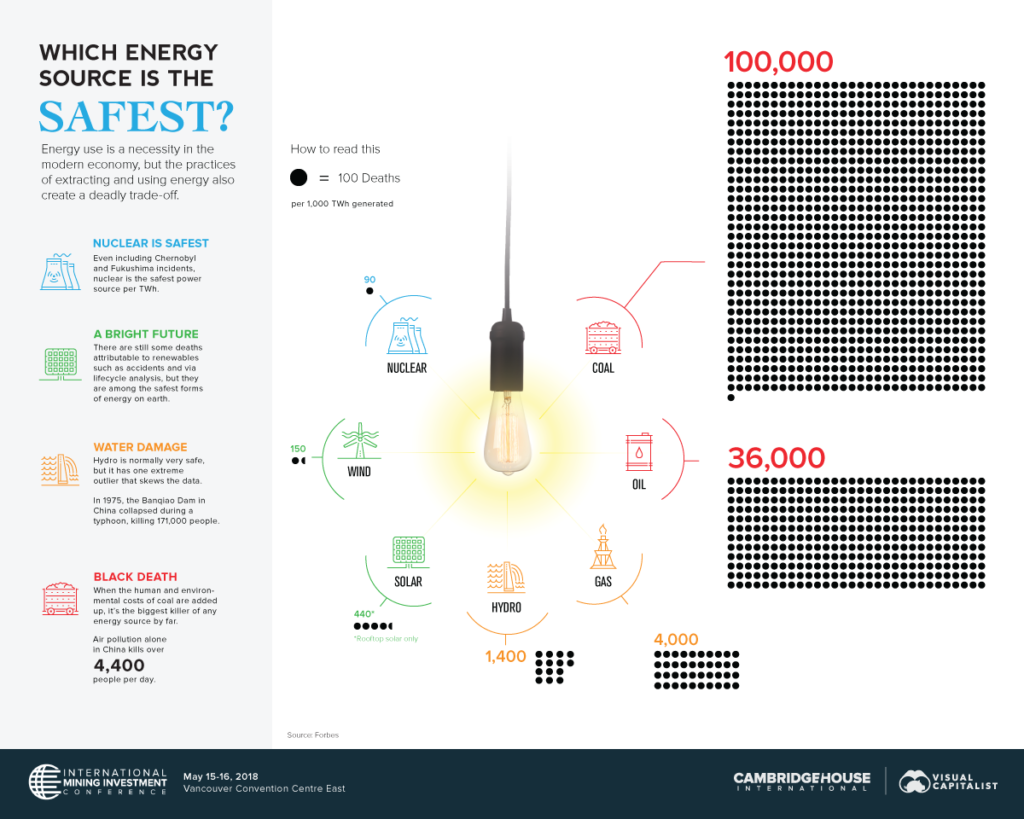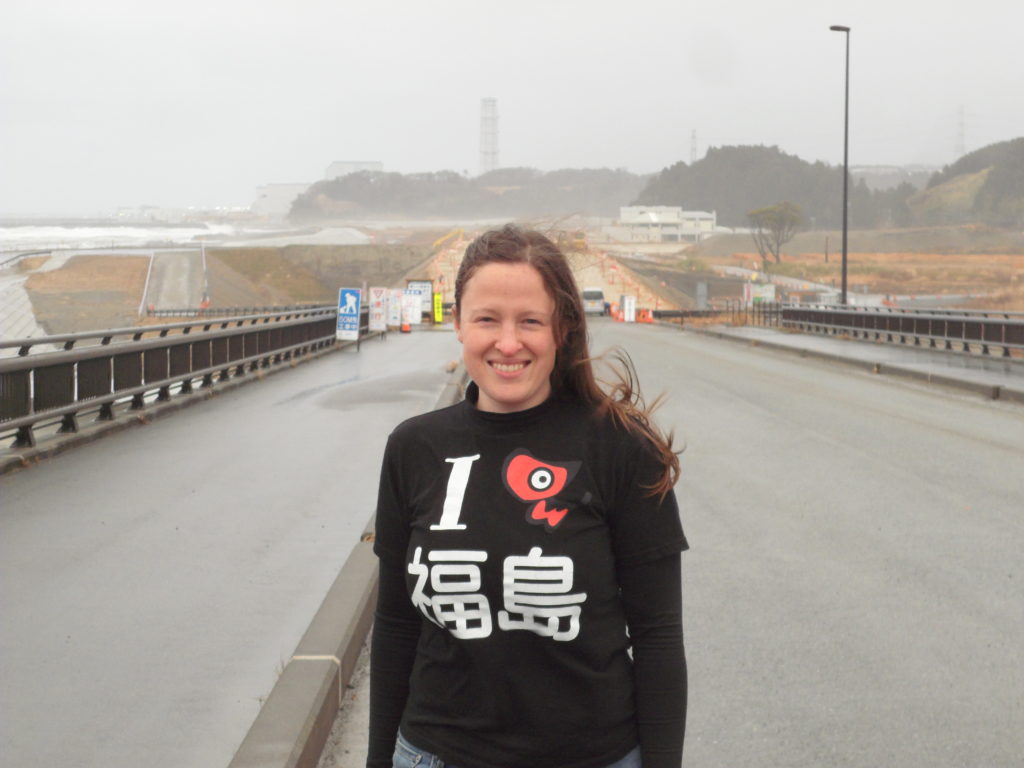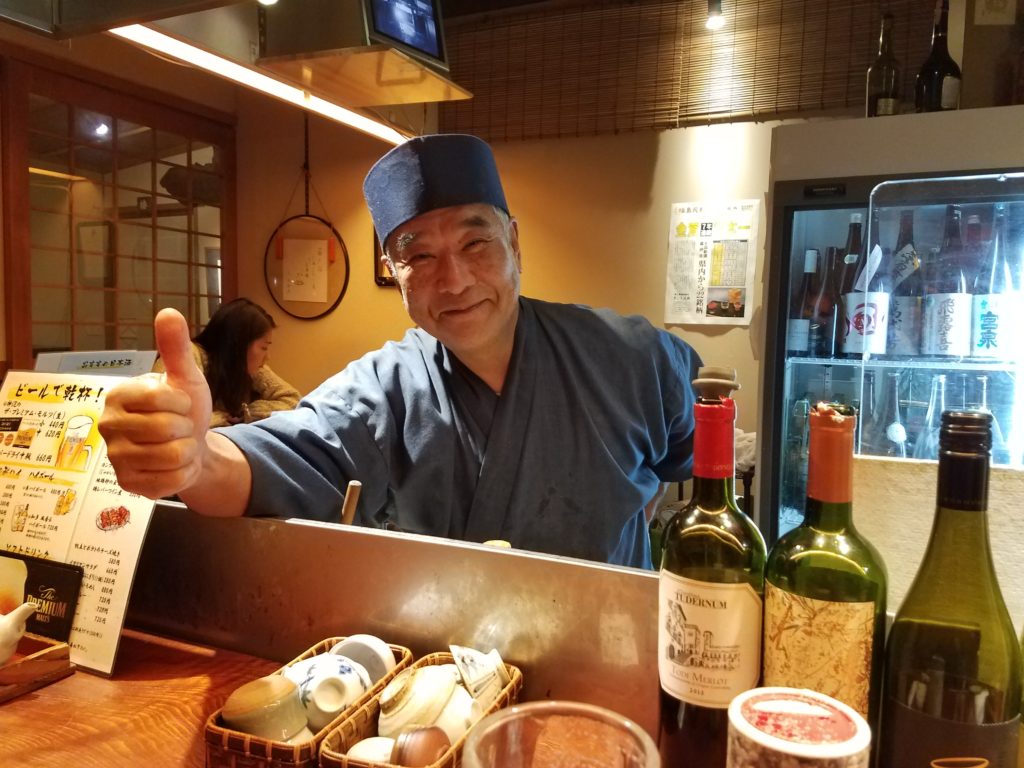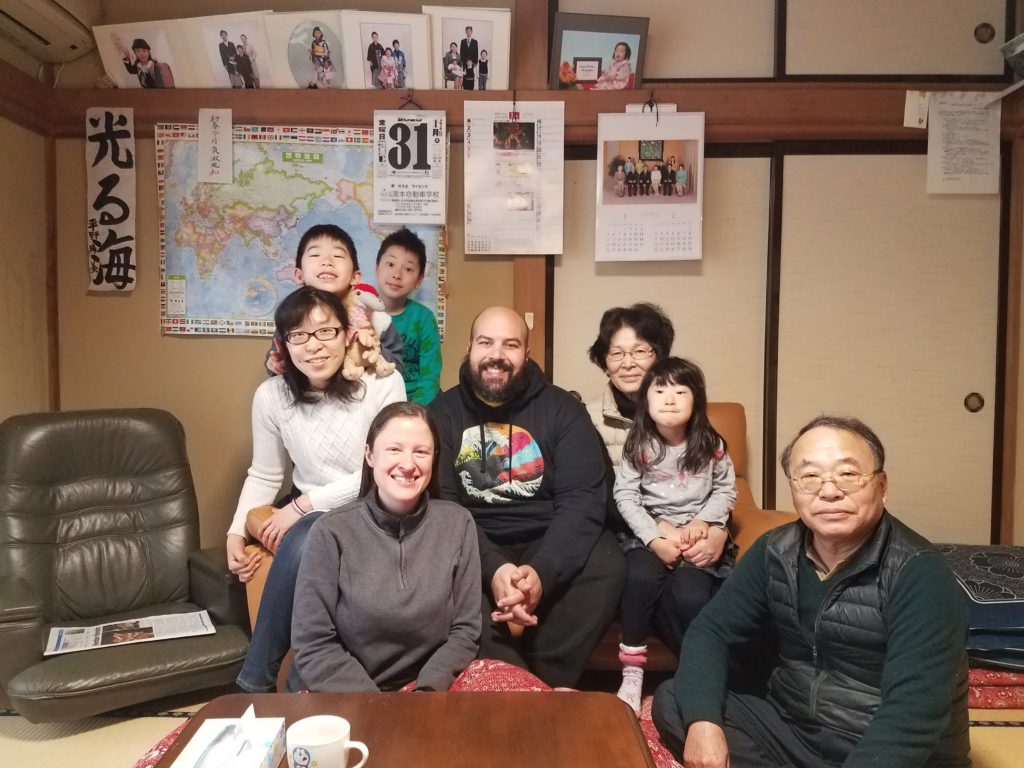Part 8 – The Future
This last installment is going live on an uncanny day. While I did intend for the first post in the series to coincide with the ninth anniversary of the March 2011 earthquake and resulting nuclear disaster, the other two anniversaries following on Fukushima’s heels were a surprise to me. It is strangely appropriate that we covered exposure, contamination, and cleanup on the 41st anniversary of Three Mile Island, and now will conclude our examination of environmental, economic, and human impact in Fukushima on the 34th anniversary of Chernobyl.
Keeping Perspective
Media treatment of the disaster in Japan is rarely mentioned without a comparison to Chernobyl, even if just to say that “Fukushima was the second-worst nuclear disaster in history.” I frequently complain about this comparison because, while technically correct, it conveys the idea that the two events were somehow similar in cause, scope of destruction, or loss of life. To me, the only reasons I see to draw that comparison are for 1) media ratings or 2) political purposes, both of which I find incredibly disingenuous and disrespectful to the people of Fukushima. (I suppose ignorance is a reason as well, but continued, willful ignorance is inexcusable in my view.)
If we take a minute to look at Chernobyl, the reactor itself had a fatal flaw that almost no one knew about. Control rod design resulted in an initial spike (rather than reduction) of neutron activity during insertion, which caused an explosion of the reactor core during a SCRAM. That information was kept from nuclear workers for political reasons because the government did not want to appear weak in admitting a flawed reactor design. Further political pressure resulted in a crew of untrained workers carrying out a risky safety test with no notice and in dangerous conditions. In other words, flawed design compounded by the perfect storm of human errors resulted in the greatest nuclear tragedy in human history.[1]
(I would, by the way, highly recommend watching HBO’s Chernobyl series, which Christian and I just finished. It is very well-produced and highly-accurate with few artistic liberties. Major content warning for human and animal suffering.)

NB: The number for nuclear includes information from Chernobyl, Fukushima, and modeled likelihood of cancer caused by various levels of radiation exposure.
Image credit: [4]; Data source: [5]
The accident at Fukushima Daiichi was not caused by gross negligence but rather a series of unforeseen natural disasters. It is true that Reactor One was scheduled to be retired after 41 years of a 40-year useful life, but the issue was not the age of the reactors; it was the fact that external conditions fell so far outside of stress testing scenarios that they had never been considered. Having the backup diesel generators located in the basements of buildings that flooded seems foolish in hindsight, but no one envisioned or tested scenarios with a tsunami of that size crashing over the seawall. Battery backups with a useful life of a few hours to support those diesel generators seems insufficient in hindsight, but no one could have imagined an earthquake of that size completely severing the plant’s access to external power sources.
It is absolutely impossible to account for every unforeseen scenario, and nuclear accidents are terrifying because the scale can be massive, the recovery time is unimaginably long, and the danger is not something we can see with our own eyes. However, it is important to remember that while nuclear accidents may be the most present in our minds when we think of energy industry dangers, they are also the least likely to happen. Accidents and fatalities occur in the course of all energy generation, regardless of the source, but especially for fossil fuels.[2] And in our work to limit reliance on fossil sources, it is important to remember that there are negative environmental impacts, regardless of the source – even for renewables.[3]
It is certainly not my place to say what is right and wrong for Japan – or any country in the world for that matter. I am aware that any decision comes with a cost: for nuclear it’s anxiety around another accident; for coal, air pollution and global warming; for wind, mining of rare-earth metals in vulnerable, bio-diverse parts of the planet. What is important is to remember that there are benefits and drawbacks to any course of action.

JET Programme participants in Fukushima made “I <3 Fukushima” t-shirts as a fundraiser after the disaster. The heart is a local mascot, the akabeko (red cow).
Photo credit: Christian Korey
Social Justice
Environmental and economic considerations frequently battle for center stage in any energy debate. The human factor tends to be overlooked except in instances of fantastic disasters. When we weigh the human impact of energy generation, we must consider not just the disasters, but the mundane operations as well: miners and drillers must extract the fuel or components for new technology in dirty and unsafe environments; generation technicians must work in the plants or build and/or service equipment, facing occupational hazards; and uninvolved bystanders simply live in the shadow of extraction and/or generation, breathing the air. It seems that more often than not such operations are located near people who have little access to alternatives and little power to advocate for themselves.
Our tour guide from Japan Wonder Travel[6] explained to our group that Fukushima is rural, part of the north, and that it was historically considered uncivilized farmland, if not the frontier, by the city centers of Tokyo and Kyoto. Having lived in Fukushima’s Aizu region myself, I knew that there was a bit of that perception in the south. I’ve seen at least one TV show in which a resident of our area was a comic relief character, portrayed like the Japanese equivalent of a hillbilly with an exaggerated accent. Upon my return to the US, my accent gave me away during a reception at the Japanese embassy in New York, when a lady who worked there made a surprised face and said “you lived in Aizu, didn’t you?”
That stereotype, while amusing on TV, can persist and result in real damage. Fukushima has traditionally produced a large share of the country’s food (seafood, vegetables, rice, sake, and 20% of the country’s peaches) and energy (from nuclear, hydro, geothermal, and conventional fossil sources). However, despite all the area has given to the rest of the country, that did not prevent a Japanese cabinet minister from saying he was glad that the tsunami hit where it did instead of Tokyo.[7] He has not been the only politician to make disparaging comments about the area, and many evacuees still endure prejudice while waiting to return home.

As we got back on the highway at the end of day two, I wrote in my journal that “Fukushima produces one third of Tokyo’s power, and yet its people suffer.” Pulling my thoughts together, I recognized that social equity is an issue the world over, and that the economically-disadvantaged communities living near power plants are the ones who experience the brunt of accidents and pollution, no matter the source of fuel. I continued wondering how the government would be able to ensure equitable development moving forward – though Fukushima may have a better shot than most places at this point, given that it is still so much in the spotlight.
Bringing it Home
Three nights later, we were sitting around the kitchen table with my Japanese family in Nishi-Aizu (West-Aizu) drinking American craft beer and home-brewed mead that we brought as presents. My sister Michiko and her husband drove out from the coast with their three children to see us while we were in town. I had never talked at length with any of them about the disaster until now. All my mom Machiko had ever said about it was that they were all scared but safe. This time I learned that my brother-in-law’s childhood home is in the Okuma exclusion zone, and that his parents still have not been able to return. After the evacuation they moved to Iwaki to stay with him and my sister.
The news that evening said the government planned to treat and release massive amounts of contaminated water that has been accumulating from a leak underneath the reactors. This water has been sitting in massive storage tanks on site since the disaster, waiting for someone to come up with a plan. The only realistic alternatives are treating it then vaporizing it into the atmosphere or treating it and then releasing it into the ocean, and the ocean option is cheaper.[8]

We took this photo right before leaving. I was already trying not to cry.
Christian explained to us that the treatment process would remove almost all radionuclides except for some tritium (hydrogen with two neutrons instead of one). Many scientists say that since trace amounts of tritium are found in the ocean already, slightly elevated levels in the treated water will not harm the marine life around Fukushima. Proponents of this plan argue that massive amounts of radioactive water were released into the Pacific before the leak was caught, meaning that the worst has been done already, and a comparatively small amount of tritium will not make much of a difference.
I asked if people in Japan believed the government’s stance that the treated water will be safe. It seems that about half the people think it’s safe, and half are still skeptical. Even if the release of treated water along the coast does no harm to the fish, skepticism will continue to damage the livelihoods of Fukushima’s fishermen.
There is still a level of mistrust and concern about what the future looks like for many people in the area. While there were no immediate fatalities associated with the nuclear disaster at Daiichi, the first cancer-related death definitively linked to the accident happened in 2018,[9] and one recent study demonstrated increased levels of pediatric thyroid cancer in Fukushima.[10] Given those factors and the price tag of the decades-long cleanup effort underway, it is not surprising that many Japanese residents are leery of returning to nuclear power. Indeed, if any country in the world has a right to concerns about the word nuclear, it is Japan.
All I will say at this point is what we were left with from this trip: whatever you may feel about nuclear power, put that out of your mind when considering the people of Fukushima Prefecture. I have never in my life lived anywhere where people were more concerned about my well-being and focused on taking care of each other. If you should ever be lucky enough to travel to Japan, that is where you should go. The people who live there are proud of their home, and rightly-so. Whenever we asked people on the tour what they wanted the rest of the world to know, it was that Fukushima is a safe, beautiful place, and that they should come see it for themselves.
Thank you for reading.
[1] https://www.world-nuclear.org/information-library/safety-and-security/safety-of-plants/appendices/chernobyl-accident-appendix-1-sequence-of-events.aspx
[2] https://www.businessinsider.com/dam-safety-statistics-risk-of-death-2017-2
[3] https://bigthink.com/technology-innovation/renewable-energy-dirty-mining
[4] http://metals.visualcapitalist.com/safest-source-energy/
[5] https://www.forbes.com/sites/jamesconca/2012/06/10/energys-deathprint-a-price-always-paid/#11bf8daa709b
[6] https://japanwondertravel.com/
[7] https://www.theguardian.com/world/2017/apr/26/japan-reconstruction-minister-quits-after-inappropriate-comment-on-disaster-zone
[8] https://www.forbes.com/sites/jamesconca/2020/02/01/japans-expert-panel-agrees-that-dumping-radioactive-water-into-the-ocean-is-best/#586750e8200c
[9] https://www.bbc.com/news/world-asia-45423575
[10] https://www.theguardian.com/environment/2015/oct/20/fukushima-nuclear-disaster-first-worker-diagnosed-cancer
0 Comments